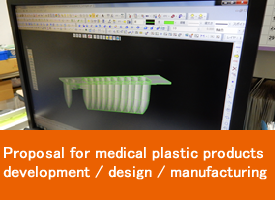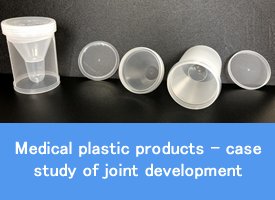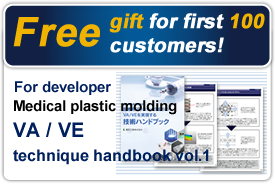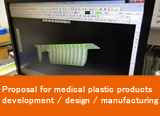Before (改善前)
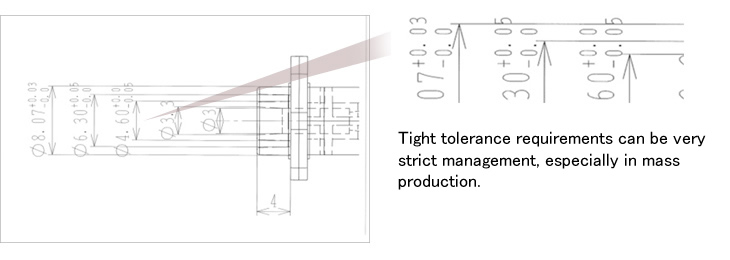
When designing medical plastic products, the dimensions of plastic molded products change even at room temperature, so when manufacturing precise parts, strict tolerances are often set at the design stage as shown in this drawing in general. However, if tight tolerances are set for points that are not actually needed, manufacturing costs will increase accordingly. In particular, if a very tight tolerance is specified at the time of a prototype / development project, even a small change in conditions will significantly change the evaluation of the product, and it will be very difficult to manage the mass production.
V
After (改善後)
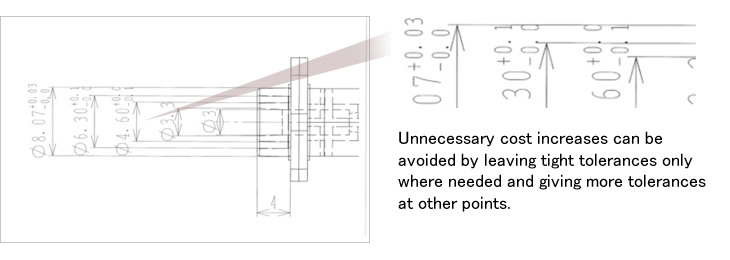
We can create appropriate product drawings and product specifications, by setting tolerances only for the minimum necessary parts, produce prototype models by cutting, 3D printer, stereolithography, etc., and then evaluate and set the maximum and minimum tolerance samples when designing medical plastic products. With this method, it is possible to determine appropriate tolerance for each points for actual mass-production of plastic products, and to avoid unnecessary cost increases.
POINT(要約)
In the case of plastic injection molded products of trial production and development, use mold production drawings as reference drawings, set tolerances for minimum required points as required specifications of plastic products, and produce several prototypes and development products. During the process, produce and evaluate the samples with the degree of filling of the plastic resin, the maximum and minimum tolerance, etc., and then the most suitable one can be selected. In this way, it is possible to manufacture a product with high cost performance that is optimal for the intended use by actually creating and evaluating sample products at the initial stage (prototype / development stage).





